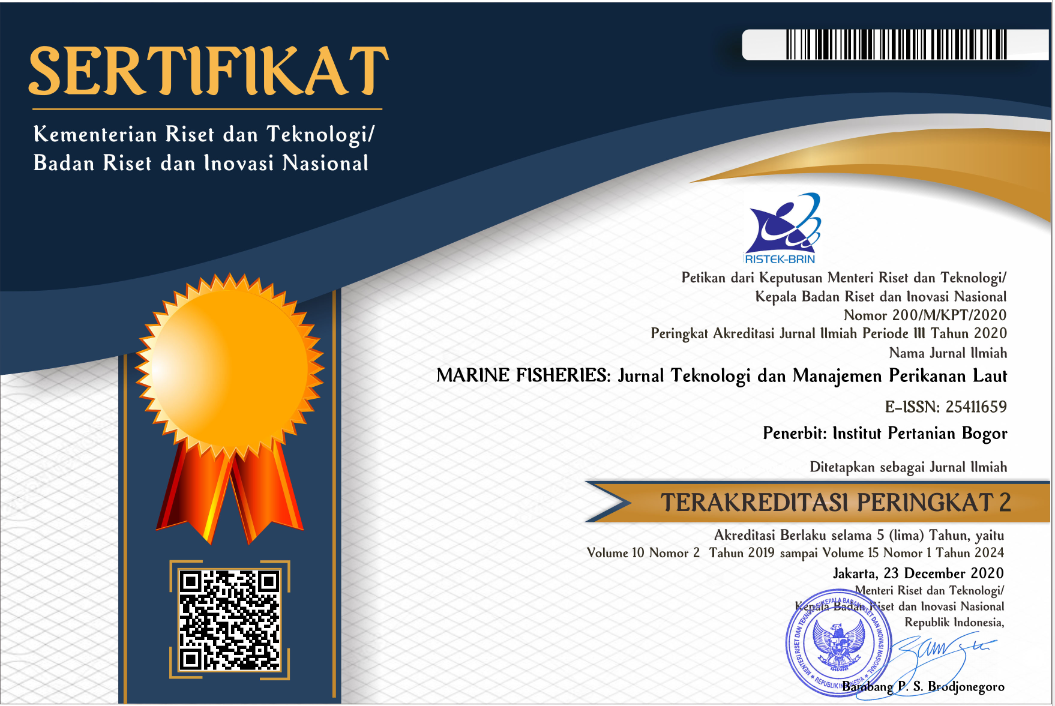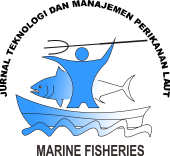KARAKTERISTIK BIOLOGIS IKAN TONGKOL (Euthynnus affnis) HASIL TANGKAPAN PURSE SEINE DI PERAIRAN HERLANG TELUK BONE, INDONESIA
Biological Characteristics of Little Tuna (Euthynnus affinis) Purse Seine Catch in Herlang, Gulf of Bone, Indonesia
Abstract
Purse seine fishing gear is designed to catch both large and small pelagic fish, and commonly used in tuna fisheries. However, this gear is not size-selective, and can pose a threat to fish stocks. The aim of this study was to obtain information on the biological characteristics of little tuna (Euthynnus affinis) caught by purse seiners operating in the waters of Herlang District in Bulukumba Regency, South Sulawesi, Indonesia. Data collected from March to May 2019 included little tuna fork length (FL), weight, sex, and gonad maturity stage (GMS). Fish characteristics analysed in this study were length-weight relationship, size distribution, life phase, and gonadal maturity. Analyses were performed in MS Excel 2010 and Graphpad Prism v.5.03. Male and female little tuna had isometric growth patterns. Modal length class was 24.0-24.4 cm for males and 23.0-23.4 cm for females. All fish caught were below 30 cm TL, while the mean size at first maturity for this species is 39.8 cm. Although the catch was dominated by immature fish (GMS I and GMS II), all GMS stages were present for both sexes, with around a third of females in GMS III-V.
Keywords: Scombridae, gonad maturity stage, length-weight relationship, early maturation, fishing pressure.
Downloads
Author(s) who published in this journal agree to following terms:
- Author(s) must understand and agree that the copyright script in published owned by the Marine Fisheries Journal. The copyright includes reproducing and selling the manuscript to all parties.
- Everyone can cite every manuscript published in Marine Fisheries for educational purposes, with the author's name and the Marine Fisheries Journal on reference.










